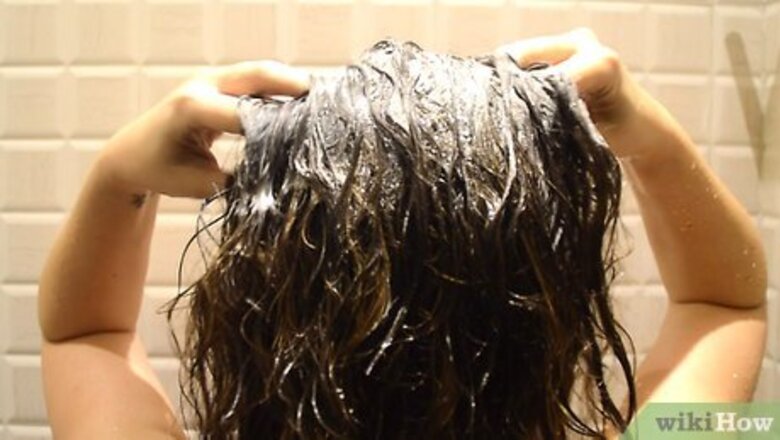
views
Wash your hair with moisturizing shampoo.
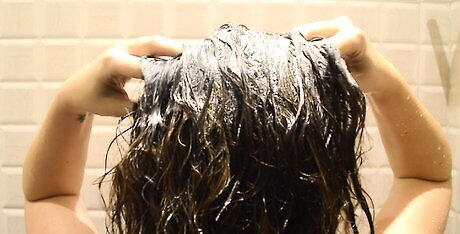
Start with clean hair for smooth, frizz-free results. Use a gentle shampoo made with hydrating ingredients like glycerin, aloe vera, and coconut oil. Wet your hair with warm water, lather up, and rinse with warm water. Avoid shampoos with alcohols and sulfates since those tend to dry out hair and create frizz. Avoid hot water since it strips hair of its natural oils and causes frizz. Your hair's natural oils can also help protect it from heat-styling damage.
Apply a strengthening treatment.
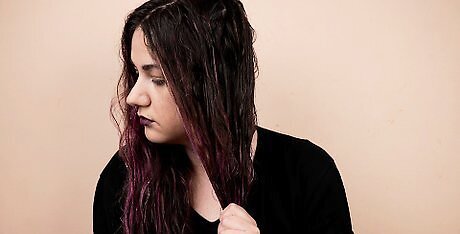
A protein or bond building treatment preps your hair for heat styling. Hair straightening involves a lot of hot tools that can damage your hair. Using a strengthening treatment first can help you minimize that! Most strengthening treatments are applied like conditioner and rinsed out after several minutes. Check your product’s packaging instructions for specific details and instructions. Some products are leave-in and others require rinsing. Be sure to check! If you don’t have a strengthening treatment, do a deep-conditioning treatment. A big dose of hydration helps prevent frizz and minimize damage.
Squeeze out excess moisture with a towel.

Use a microfiber towel or an old T-shirt to gently squeeze your hair. Squeeze and dab your wet hair with the towel or shirt to get out as much moisture out as possible. Be gentle as your go! Vigorously towel-drying your hair can cause breakage and create frizz. Avoid terry cloth towels since they’re too rough on your hair.
Detangle your hair with a wide-toothed comb.
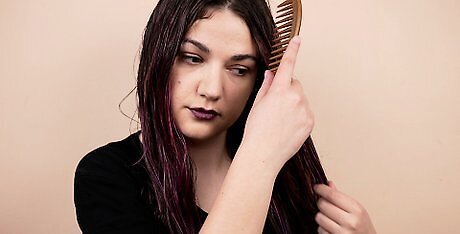
A wide-toothed comb is the gentlest way to detangle wet hair. Start combing at the ends of your hair and work your way slowly up the shaft until you get to the roots. Since hair is fragile when it’s wet, avoid detangling with a fine-toothed comb or hair brush after washing it. Spritz a detangling product on your hair first if you have knots and tangles.
Let your hair air-dry about 75%.
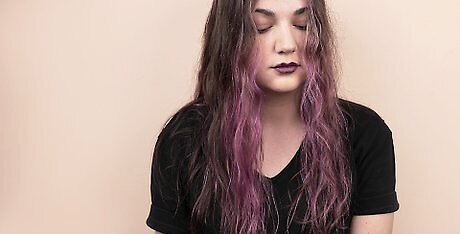
The less you have to blow dry your hair, the better! If you have time to let your hair partially air-dry before heat styling it, take it! Air-drying your hair first shortens the blow-drying time and exposes your hair to less heat. Any amount of air-drying you have time for is better than nothing.
Apply heat protectant from root to tip.
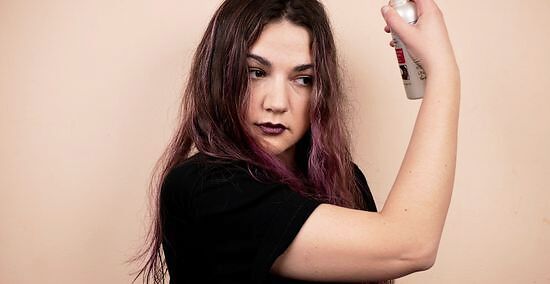
Thermal protectants prevent hair damage caused by heat styling tools. If you have fine hair, use a lighter, spray-on thermal protectant that won’t weigh down your locks. If your hair is on the thicker side, go with a cream thermal protectant instead. Whatever you choose, don’t skip out on this step! Putting a barrier between your hair and damaging heat is really important.
Divide your hair into 4-6 sections.
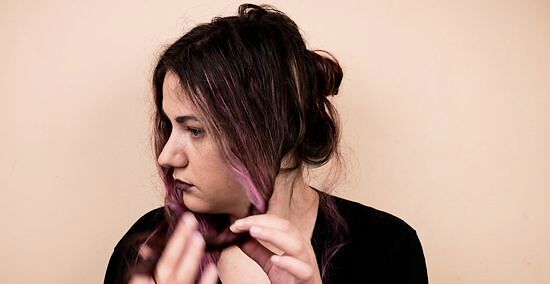
Clip all the sections up and out of the way except the bottom one. Working in sections allows you to concentrate on 1 area at a time so you can get it super smooth and completely dry before moving on. Gently coil and clip each section up on top of your head with plastic hair clips. Leave the bottom section down since that’s easiest place to start blow-drying. The sections don’t have to be perfect! If you’d like, apply a small amount of smoothing serum to each section from root to tip before you blow dry it.
Fit your blow dryer with a diffuser.
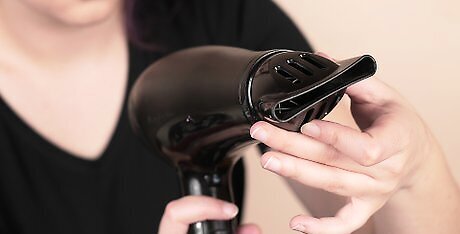
The diffuser's concentrated air flow helps prevent frizz. Diffusers are flat, nozzle-shaped attachments that you fit on the end of any standard-sized hair dryer. The concentrated air flow is gentler on your hair and helps you achieve the smoothest finish possible. If you don’t use a diffuser, the hot air disperses and creates frizz.
Use the low heat setting on your blow dryer.
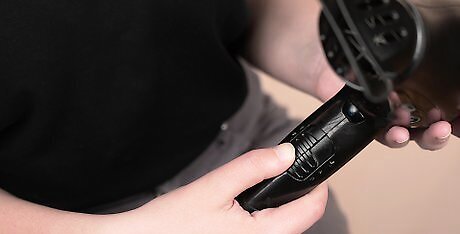
Using low heat takes a bit longer, but it’s worth it to avoid damage. Blow drying on a medium or high heat setting can cause major frizz and potentially damage your hair. Use the lowest heat setting your blow dryer has. If you let your hair air-dry 75-80% first, you might even be able to get away with using the cool setting.
Dry the first section with a medium round brush.

Use a ceramic or boar bristle round brush for the smoothest results. Position the round brush under the bottom section of hair close to the roots and turn on the blow dryer. Aim the diffuser straight down at your hair and slowly roll the round brush through your hair to the ends, moving the diffuser with the brush at the same speed. Keep doing this until your hair is completely dry. A ceramic round brush absorbs heat from your blow dryer to create ultra smooth results. A boar bristle round brush has tightly packed bristles that can help you achieve smooth, frizz-free locks.
Dry the remaining sections the same way.
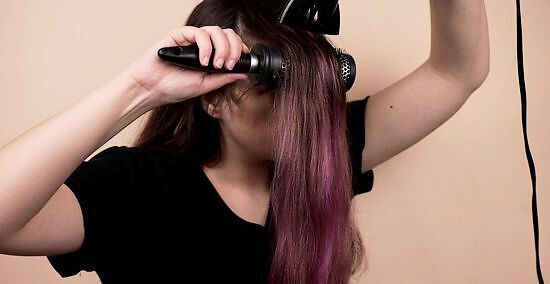
Work on 1 section at a time until all of your hair is dry. Continue the same process with the round brush and the diffuser, keeping the heat concentrated on the hair wrapped in the brush. Be sure to get every section completely dry before you move on! Flat ironing damp hair can cause serious damage.
Flat iron your hair in 1 in (2.5 cm) sections.
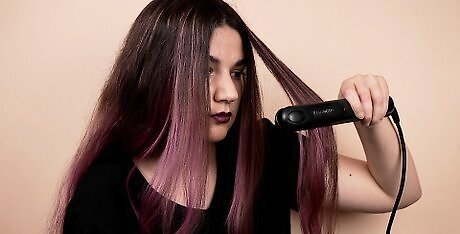
Set the temperature to 300–350 °F (149–177 °C) for minimal damage. Start at the hairline on 1 side of your head so you can work systematically. Grab the first section of hair and pull it taut. Clamp the hair between the flat iron’s plates as close to your roots as you can and pull the flat iron down the length of the hair. Then, move to the next section and do the same thing. Keep going until all of your hair is straightened.
Finish up with a smoothing serum.
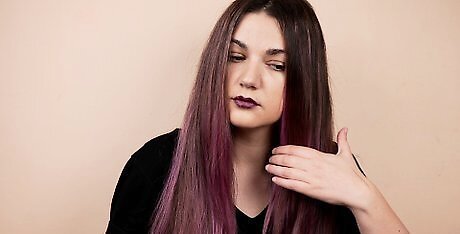
A lightweight smoothing serum tames flyaways and adds shine. Pump a pea-sized amount of serum into your hand and rub your palms together to distribute the product. Then, run your hands through all of your hair, starting about 1–2 in (2.5–5.1 cm) from the roots and going all the way down to the ends.
Avoid touching your straightened hair.
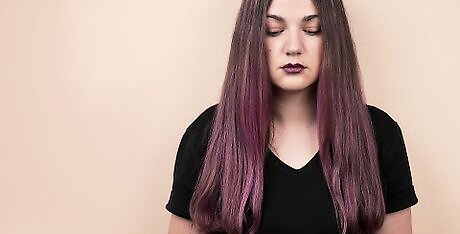
Touching can strip your hair’s natural oils and cause frizz. Now that your hair is nice and smooth, it’s so tempting to run your fingers through it! If you do that, though, you’ll end up with frizz and the style won’t last as long. Your hair is also pretty fragile right now, so touching can lead to breakage.
Sleep on satin pillowcase at night.
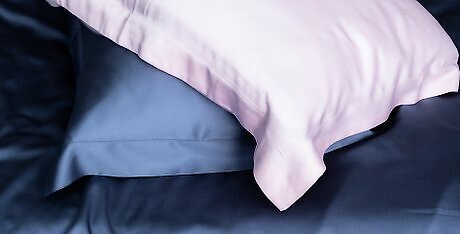
The smooth surface reduces friction that leads to frizz. Cotton pillowcases can be rough on your hair because they create quite a bit of friction. Switch out your old pillowcase with a silk or satin one. You’ll wake up each morning with smooth, tangle-free hair and your style will last longer. Satin and silk both work great—the main difference is the price. Satin is much more affordable than silk.
















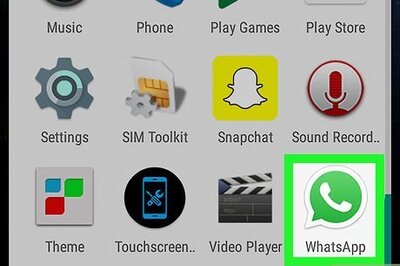



Comments
0 comment